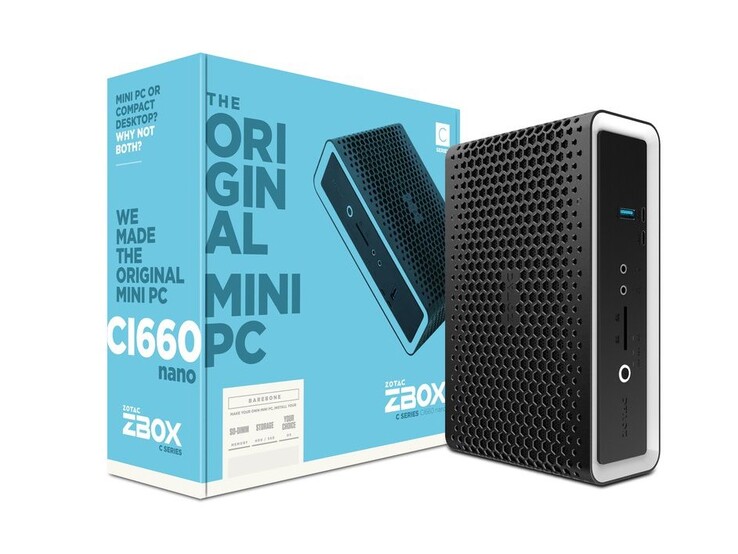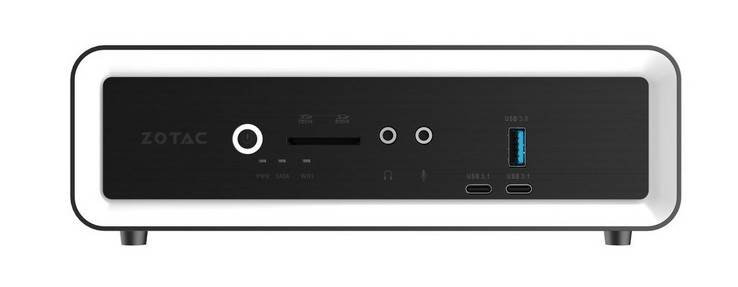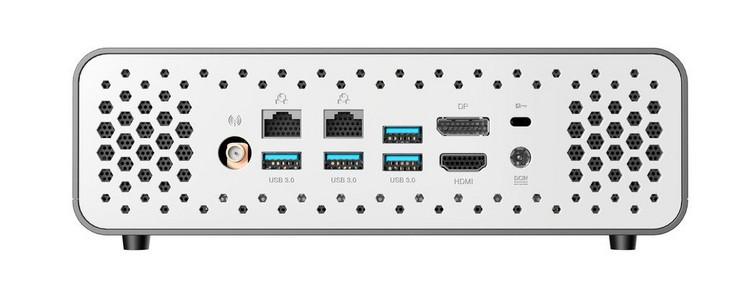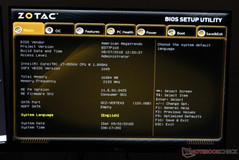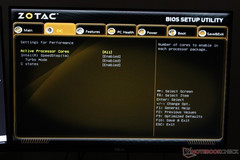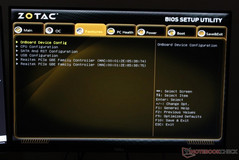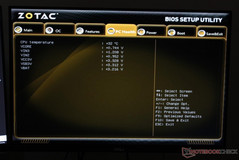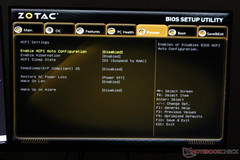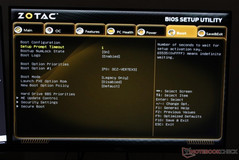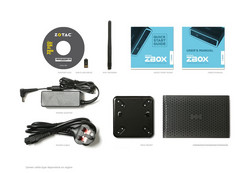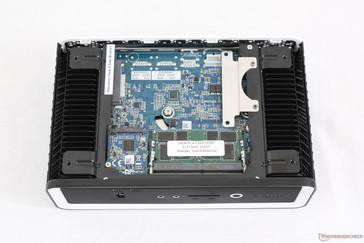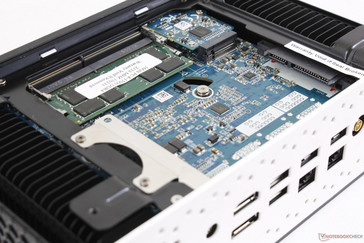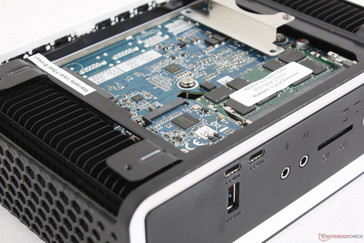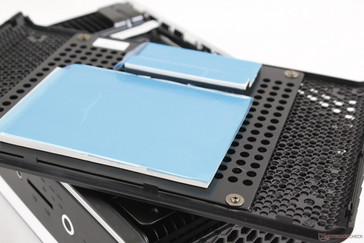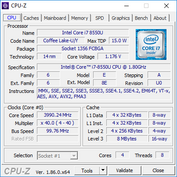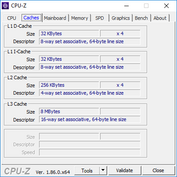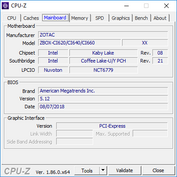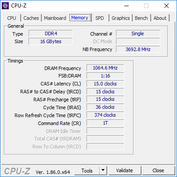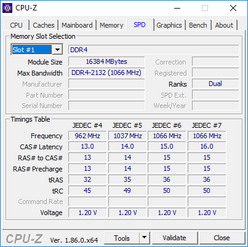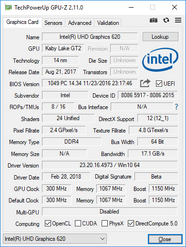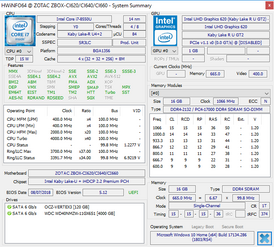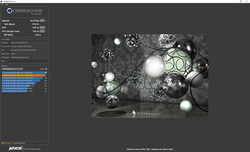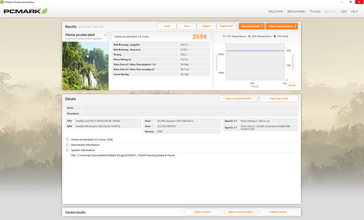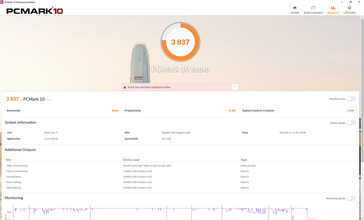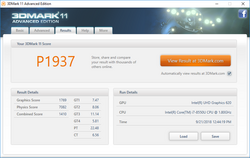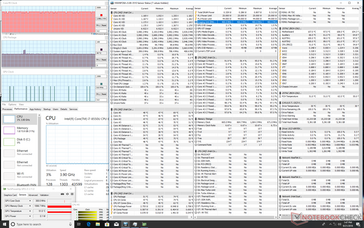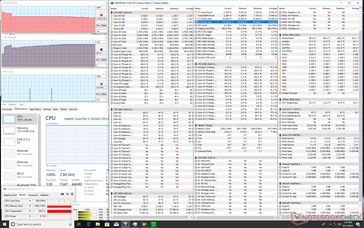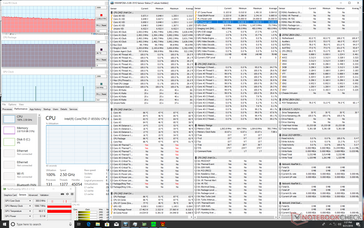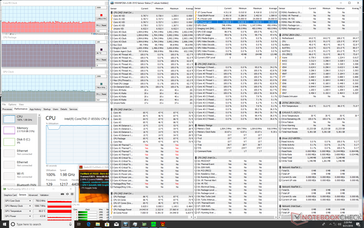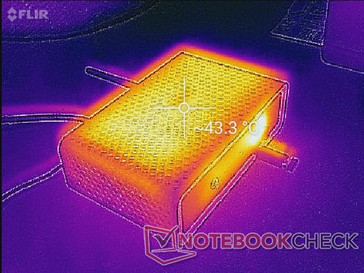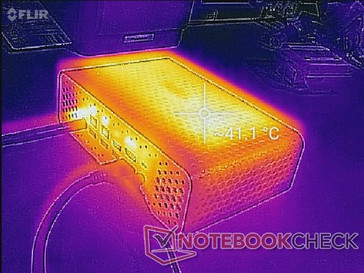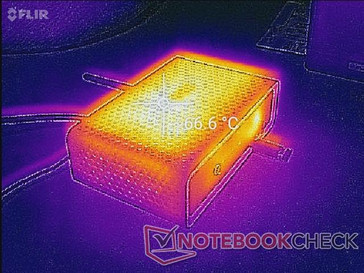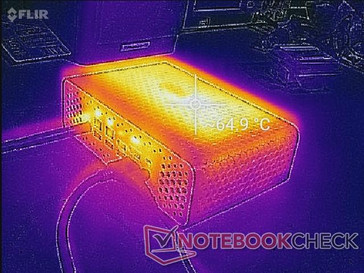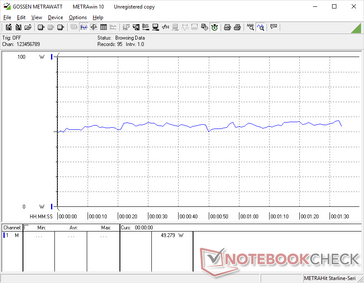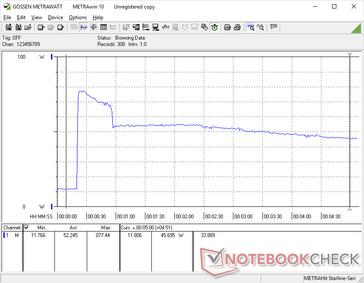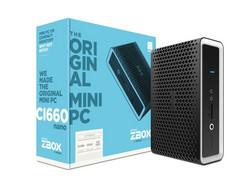Zotac ZBOX-CI660 Nano (i7-8550U) Mini PC Review
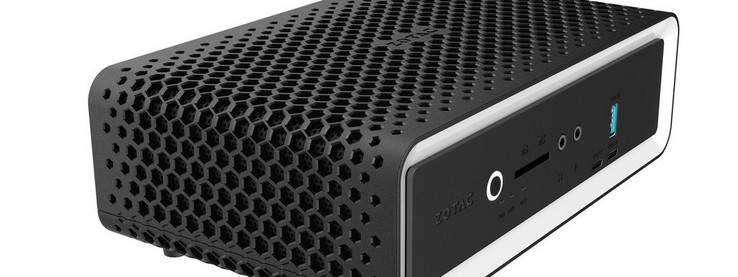
Zotac offers a very wide range of mini PCs from the ZBox B series all the way up to the ZBox S series with each family specializing in a specific market segment. Today, we'll be looking at the ZBox C series that specializes in fanless designs for silent operation.
The fanless ZBox CI660 Nano could have gone the easy route by incorporating a slow <7 W TDP Intel Atom or Celeron CPU as is tradition for fanless designs. To stand out from the crowd, however, Zotac has managed to cram in a more powerful 25 W cTDP (or 15 W TDP) Core i7-8550U that is traditionally cooled with running fans. Such as a CPU can be found on popular Ultrabooks like the XPS 13 or Huawei MateBook X Pro. For this review, we will see just how well the CI660 Nano can perform under load and what compromises were necessary - if any - to offer a completely noiseless machine.
The CI660 is not yet available in market. When prices are known, we will update this page with the information accordingly.
Lower-end CI640 and CI620 SKUs will also be available with the Core i5-8250U and Core i3-8130U, respectively.
Other Zotac mini PCs:
Case
A significant percentage of the chassis volume is dedicated to the large heat sink. The hollow honeycomb holes on five of the six sides allow heat to dissipate more freely and they give the ZBox a unique sponge-like look in the process. The rather unconventional design is necessary to maximize breathability and accommodate the 15 W Core i7 CPU without any fans.
Beyond its distinct appearance, the chassis is mostly plastic from top to bottom. Pushing down on the center of the top or bottom will warp the surfaces and cause a light creak. Flexing is not severe enough to be worrisome, but the overall feel of the unit is not as rigid or firm as an Intel NUC or Gigabyte Brix.
As for size, the CI660 Nano is bigger than competing mini PCs equipped with the same Core i7 CPU. The Gigabyte Brix BRi7, for example, is 34 mm thick compared to 68 mm on the Zotac. This is unsurprising as the fanless CI660 will naturally require a larger volume for cooling. Thankfully, the system is much lighter than it looks at just over 1.1 kg.
Connectivity
Users have access to a wide array of ports along the front and back. Notable exceptions are Thunderbolt 3 and an IR receiver. While we can forgive the former, the latter is a bummer for HTPC users. The USB Type-C ports do not support DisplayPort and are data only.
SD Card Reader
The integrated card reader is slow with a transfer rate of just 35 MB/s on our UHS-II test card. Moving 1 GB worth of images from card to desktop takes almost 30 seconds compared to 6 or 7 seconds on the XPS 13. The slot is not spring-loaded and a fully inserted SD card will still protrude by about half its length.
| SD Card Reader | |
| average JPG Copy Test (av. of 3 runs) | |
| Dell XPS 13 9370 i7 UHD (Toshiba Exceria Pro UHS-II) | |
| Intel Hades Canyon NUC8i7HVK (Toshiba Exceria Pro SDXC 64 GB UHS-II) | |
| Zotac ZBOX Magnus EN51050 (Toshiba Exceria Pro SDXC 64 GB UHS-II) | |
| Zotac ZBOX-CI660 Nano (Toshiba Exceria Pro SDXC 64 GB UHS-II) | |
| maximum AS SSD Seq Read Test (1GB) | |
| Dell XPS 13 9370 i7 UHD (Toshiba Exceria Pro UHS-II) | |
| Intel Hades Canyon NUC8i7HVK (Toshiba Exceria Pro SDXC 64 GB UHS-II) | |
| Zotac ZBOX Magnus EN51050 (Toshiba Exceria Pro SDXC 64 GB UHS-II) | |
| Zotac ZBOX-CI660 Nano (Toshiba Exceria Pro SDXC 64 GB UHS-II) | |
Communication
The ZBox CI660 Nano uses the same Intel 3165 1x1 WLAN module as on the ZBox Magnus EN51050 for similar speeds and Bluetooth 4.2 connectivity. There are disappointingly no 2x2 WLAN options and so transfer rates can be about 50 percent slower. Systems with the Intel 8260 or Killer 1435, for example, can reach transfer rates of over 600 Mbps compared to 300 Mbps on our Zotac.
| Networking | |
| iperf3 transmit AX12 | |
| Dell XPS 13 9370 i7 UHD | |
| Intel Hades Canyon NUC8i7HVK | |
| Zotac ZBOX Magnus EN51050 | |
| Zotac ZBOX-CI660 Nano | |
| iperf3 receive AX12 | |
| Dell XPS 13 9370 i7 UHD | |
| Intel Hades Canyon NUC8i7HVK | |
| Zotac ZBOX Magnus EN51050 | |
| Zotac ZBOX-CI660 Nano | |
Accessories
Maintenance
Warranty
The unit is covered by a two-year manufacturer warranty in North America compared to just one year on most consumer products. Please see our Guarantees, Return policies and Warranties FAQ for country-specific information.
Performance
Processor
To our surprise, the Core i7-8550U in the CI660 performs quite well considering there is no system fan. Its CineBench R15 Multi-Thread score is almost 20 percent higher than the average i7-8550U in our database to suggest that the system has excellent Turbo Boost clock rates. Raw CPU power is even noticeably faster than the pricier ZBOX Magnus EN51050.
Running CineBench R15 Multi-Thread in a loop reveals that CPU performance declines over time as shown by our graph below. Its initial score of 702 points can fall by as much as 23 percent halfway through the stress test. While this sounds discouraging, performance sustainability is actually better than expected. The Huawei MateBook X Pro with the same i7-8550U CPU, for example, settles at around 470 points compared to 540 points on the Zotac when subjected to the same CineBench loop test. Put another way, the CI660 is able to maintain faster Turbo Boost clock rates for longer.
See our dedicated page on the Core i7-8550U for more technical information and benchmark comparisons.
System Performance
| PCMark 8 Home Score Accelerated v2 | 3594 points | |
| PCMark 10 Score | 3837 points | |
Help | ||
GPU Performance
Graphics performance from the integrated UHD Graphics 620 has been well documented. When compared to the last generation HD Graphics 620, the performance benefits are negligible for gaming. This should be of no hindrance to the system as the CI660 is meant for 4K streaming, browsing, word processing, and other HTPC tasks. Users who may need more graphics power should consider the ZBOX Magnus EN51050 or an Intel NUC with Iris graphics.
See our dedicated page on the UHD Graphics 620 for more technical information and benchmark comparisons.
| 3DMark 11 Performance | 1937 points | |
Help | ||
Stress Test
We stress the system with synthetic loads to test for any potential throttling or stability issues. When running Prime95, the CPU can be observed running as high as 3.7 GHz for the first few seconds before immediately falling to 3.1 GHz in order to keep core temperature in check. Eventually, the CPU settles at around 2.5 GHz and a steady core temperature of 86 C. When considering that the base clock rate of the Core i7-8550U is 1.8 GHz, we're impressed that the passively cooled system is able to maintain a Turbo Boost clock rate of +700 MHz for so long.
Running both Prime95 and FurMark to fully stress the CPU will cause clock rate to drop to just 2.0 GHz. A core temperature ceiling of 86 C is seemingly in effect at all times.
| CPU Clock (GHz) | GPU Clock (MHz) | Average CPU Temperature (°C) | |
| System Idle | -- | -- | 49 |
| Prime95 Stress | 2.6 | -- | 86 |
| Prime95 + FurMark Stress | 2.0 | 750 | 86 |
Emissions
System Noise
There is no system noise to speak of. Even coil whine or electronic noise is not present.
Temperature
Surface temperatures can be as warm as 43 C simply by idling on desktop as shown by our temperature maps below. In comparison, the gaming-centric ZBOX Magnus EN51050 hovers around 35 C when idling. The higher temperatures are by design for the CI660.
Running very high loads can cause temperatures to be as high as 66 C on the very top of the machine. At this point, the CI660 essentially becomes a mini radiator for cats. Avoid stacking books or heavy items on top of the unit.
Energy Management
Power Consumption
Idling on desktop draws about 10 W to 11 W while gaming loads or higher will demand about 51 W. Interestingly, power consumption is measurably higher than on the XPS 13 9370 even though the Dell system must power a 4K UHD display alongside the same i7-8550U CPU. Running extreme loads will demand an average of 63 W from the small (~10.5 x 4.5 x 3.0 cm) 65 W AC adapter. We are able to record power consumption much higher than 65 W during extreme loads and so a more capable adapter would have been more appropriate.
As shown by the graph below, power consumption can spike to as high as 77 W when initiating Prime95 before steadily falling over time. This behavior mirrors our CineBench loop test above to confirm that the system is only able to sustain very high Turbo Boost speeds for short periods.
| Off / Standby | |
| Idle | |
| Load |
|
Key:
min: | |
| Zotac ZBOX-CI660 Nano i5-8550U, UHD Graphics 620, OCZ Vertex OCZSSD2-1VTX120G, , x, | Intel Hades Canyon NUC8i7HVK i7-8809G, Vega M GH, Intel Optane 120 GB SSDPEK1W120GA, , x, | Zotac ZBOX Magnus EN51050 i5-7500T, GeForce GTX 1050 Mobile, Samsung SSD 960 Pro 512 GB m.2, , x, | Intel NUC7CJYH Celeron J4005, UHD Graphics 600, SanDisk Ultra II, , 0x0, 0" | Dell XPS 13 9370 i7 UHD i5-8550U, UHD Graphics 620, Toshiba XG5 KXG50ZNV512G, IPS, 3840x2160, 13.3" | HP EliteBook 735 G5 3UN62EA R7 2700U, Vega 10, Toshiba KBG30ZMV256G, IPS, 1920x1080, 13.3" | |
|---|---|---|---|---|---|---|
| Power Consumption | -80% | -102% | 57% | 24% | 20% | |
| Idle Minimum * (Watt) | 9.7 | 15.5 -60% | 21.1 -118% | 3.9 60% | 5 48% | 5.5 43% |
| Idle Average * (Watt) | 9.8 | 16.2 -65% | 22.1 -126% | 4.5 54% | 8.3 15% | 9.4 4% |
| Idle Maximum * (Watt) | 11.8 | 16.5 -40% | 26.6 -125% | 8.4 29% | 8.8 25% | 11.6 2% |
| Load Average * (Watt) | 51.6 | 83.4 -62% | 77.5 -50% | 12.3 76% | 46.4 10% | 39 24% |
| Load Maximum * (Watt) | 63.2 | 173.5 -175% | 121.7 -93% | 21.4 66% | 48.6 23% | 45.6 28% |
| Witcher 3 ultra * (Watt) | 121.7 | 92.4 |
* ... smaller is better
Pros
Cons
Verdict
Passively cooled mini PCs usually have one major drawback and that is CPU performance. Most are equipped with <10 W TDP CPUs like the Atom x5-Z8350 or a Celeron J series which are notorious for their molasses speeds and poor multi-tasking. The ZBox CI660 bucks this trend by incorporating a full-fledged 15 W TDP Core i7-8550U CPU to be one of the fastest passively cooled mini PCs available. In fact, its oversized heat sink allows the CPU to run even faster than on many super-thin Ultrabooks without requiring any fans. Our initial fears of a heavily throttled system can be put to rest.
While performance is great, there are a few missing features worth mentioning. The lack of both an IR receiver and M.2 storage slot impacts the HTPC capabilities of the unit. The slower 1x1 WLAN may also affect streaming quality for enthusiasts who wish to stream 4K content or games without resorting to cabled Ethernet. Lastly, the size of the unit is slightly larger than other mini PCs with the same CPU or faster such as the GIGABYTE BRIX GB-BRi7 or Intel Skull Canyon NUC. Users gain on quiet operation by losing a bit on size.
Beyond the short list of disadvantages, the CI660 is excellent for users who want a completely silent mini PC with more processing power than is typically associated with fanless designs. We're hoping that Zotac will take the concept even further by introducing Iris graphics options on future models.
Fanless but with the power of a traditional Ultrabook. The Zotac CI660 Nano is for users who want a completely silent mini PC without sacrificing performance. If fan noise is not a concern, however, then there are smaller competing options with the same CPU or better.




